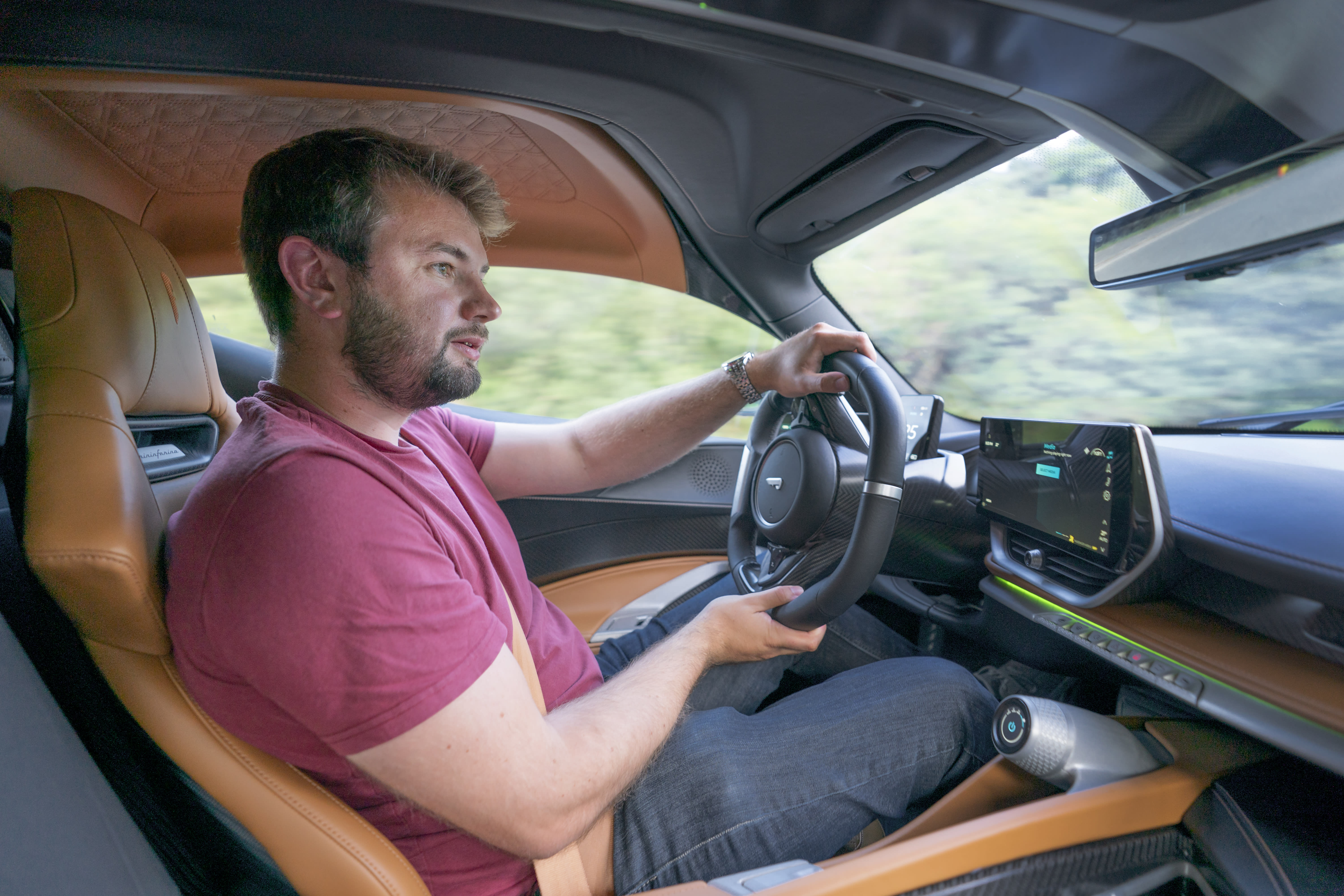
Suzuki Swift (2024-) Review

Introduction
Suzuki reckons it has spotted a gap in the market. With the likes of the Nissan Micra and Ford Fiesta exiting the compact hatchback space, Suzuki thinks there’s an opportunity to lure in a few new customers with a small, reliable, petrol-powered hatchback. There’s no arguing with the logic – thousands of customers will not be able to replace their current cars with the same car again – but drawing them in requires a new car.
That’s where the new Swift comes in. A heavily updated model that builds on the solid foundations of its predecessor, it’s designed to offer more performance and more technology than ever, while still providing the Suzuki essentials of reliability and value for money. The theory all sounds wonderful, but will the finished product live up to the hype?
Select's rating score* - 3.5 / 5
At a Glance
Suzuki says it has evolved the Swift design, and there’s definitely some truth to that. The lower part of the body certainly feels like a twist on the old car’s design, but the pronounced belt line is a departure for the Swift and the upper part of the car looks completely different. Black roof pillars have been used to create a kind of wraparound effect, which looks modern and svelte, but we’re not convinced it fits with the lower half of the vehicle.

Either way, the changes to the interior have been equally pronounced, but they’re much more cohesive and more successful. There’s a new 3D effect on the dashboard fascia and a kind of iPad-style touchscreen perched on top. It’s a much bigger and more modern screen than that of its predecessor, and though it’s still a bit old-school, it allows you to do everything you need.
Unfortunately, the same can’t be said of the boot, which is a bit small compared with some of the car’s rivals, although rear passenger space is at least respectable.
As is the new engine. A 1.2-litre, three-cylinder petrol motor with the mildest of mild-hybrid assistance systems, it’s more refined than that of its predecessor, and more efficient. But it has more punch, too, with increased torque despite much the same amount of horsepower. And while the Swift may not be fast — official figures suggest the acceleration is pretty slovenly, but it feels brisk enough on the road — it certainly is economical. You should be able to get well over 60mpg on a long run without trying too hard.
If you enjoy driving, however, the Swift will offer you a bit of enjoyment, if not a huge amount of engagement. Suzuki has tweaked the steering to make the car more responsive, and it has worked, especially with the car’s inherent grip and stability. The slight trade-off is the stiff ride, but it’s composed and unflustered, even if it’s a little firm.

Key Features
Key to the Swift’s appeal is the sheer quantity of equipment that comes as standard. As well as the nine-inch touchscreen, every version of the Swift comes with a reversing camera, rear parking sensors and push-button ignition, as well as 16-inch alloy wheels and a ‘keyless’ entry system. Heated front seats are standard, too, along with a host of safety systems. And that’s just with the basic Motion model. Upgrading to the Ultra specification only really gets you electrically folding door mirrors and automatic climate control.
Equipment aside, one of the other main focuses of the Swift is its new 1.2-litre engine. A three-cylinder engine with an integrated starter generator providing incredibly mild mild-hybrid tech — it’s more of an overgrown stop-start system, really — its 82hp output is hardly gargantuan. But it has a bit more grunt than its predecessor and it’s more refined, emitting little more than a characterful gurgle when it’s working hard. It’s also efficient, returning well over 60mpg on the official economy test, and that kind of economy should be achievable on a long run in the real world.
Moreover, the engine is offered with a choice of transmissions — the standard five-speed manual is a peach, and it sits alongside a continuously variable transmission for those who prefer automatics — and those choosing the range-topping manual model can get Suzuki’s AllGrip all-wheel-drive system, which might appeal to those living rurally or in areas that often experience hard winters.
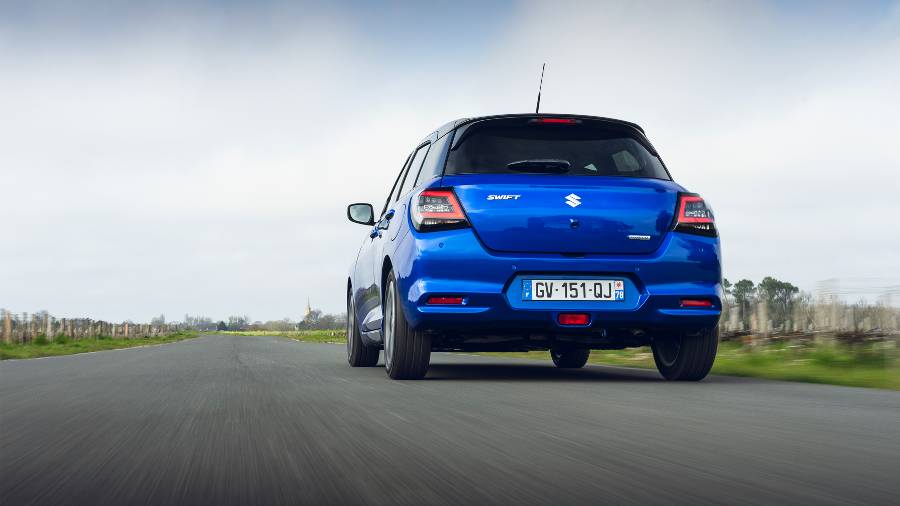
Performance & Drive
Just one engine is available for the Swift at present: the 1.2-litre three-cylinder engine that comes with mild-hybrid assistance as standard. Admittedly, the mild-hybrid system is about as mild as they come – it’s an integrated starter-generator system, for those of a technical persuasion – and to all intents and purposes, it’s basically an overblown stop-start system that can never drive the wheels by itself. Instead, it just helps to run systems on board and take some of the load off the engine.
Whatever, the point is that it makes this little (and all-new) three-cylinder engine a little more efficient, but it doesn’t necessarily help in terms of power. With 82hp, the new Swift is hardly potent, but it does have a little more torque than before, which gives it a bit more low-down grunt. Still, it isn’t all that much, and Suzuki says it takes the Swift 12.5 seconds to get from 0-62mph with the standard five-speed manual transmission. The optional continuously variable transmission (CVT) that represents the automatic option is a little quicker, at 11.9 seconds.
Either way, the Swift is not fast on paper, and the top speeds of 103 and 106mph (for the manual and automatic versions respectively) isn’t exactly scintillating. However, we suspect all is not what it seems, because the Swift feels much faster than Suzuki claims. And given the company also claimed the old Suzuki Swift Sport was much slower than it felt, we’re inclined to think the Japanese brand is underselling itself a bit.
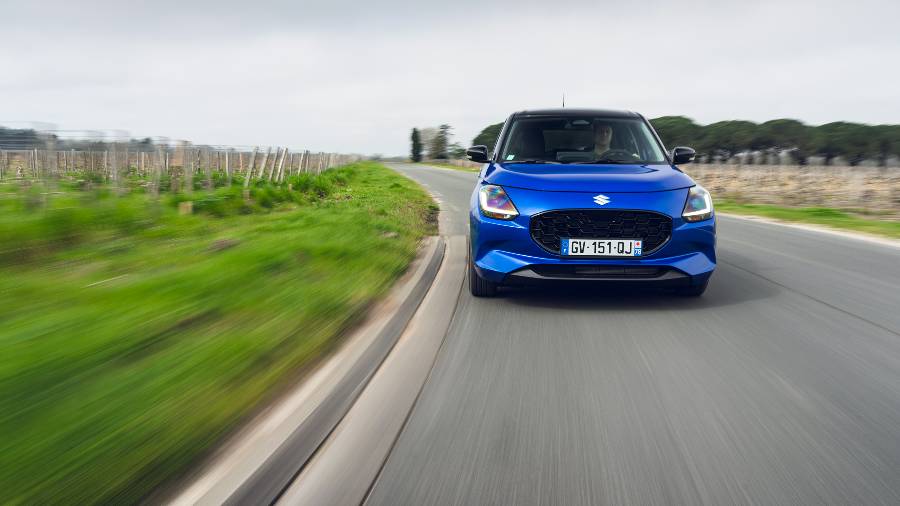
What it isn’t underselling are the improvements to the way the Swift drives. The old car was enjoyable enough, but Suzuki claims to have bettered it with the latest model, bringing more responsiveness to the steering. The difference is hardly massive, but the Swift is every bit as good to drive as before, with a sense of stability and sharpness that makes it quite engaging. The five-speed manual gearbox is good, too, with quite a precise movement and a light clutch.
What’s more, the three-cylinder engine is noticeably more refined than its four-cylinder predecessor, with a characterful thrum and much less vibration. That’s partly down to the engine, and partly down to Suzuki’s soundproofing, which has been added copiously despite the company’s desire to keep weight down. As standard, this car weighs well under a tonne. Whatever the reasoning, though, the car is now much more capable over long distances, which gives the Swift much more flexibility.

However, the ride is still a bit firm, with comfort clearly sacrificed slightly to provide greater handling prowess. But few cars in this class glide over the numerous imperfections in our roads, and the Swift’s tendency to thump over potholes, manhole covers and speed bumps is not especially troubling. At least bumps never seem to unsettle the car, which is good news, and the seats are so comfortable that the firmness is rarely a problem.
Special mention should also be made for the AllGrip all-wheel-drive system, which is available as an option on high-specification Ultra models with the manual gearbox. For most, it won’t be necessary – especially as it cuts economy – but for those in rural areas where the snow falls more regularly, it’s a nice option to have on a small car. Pair it with some winter or all-season tyres and it should deal with icy roads pretty well.
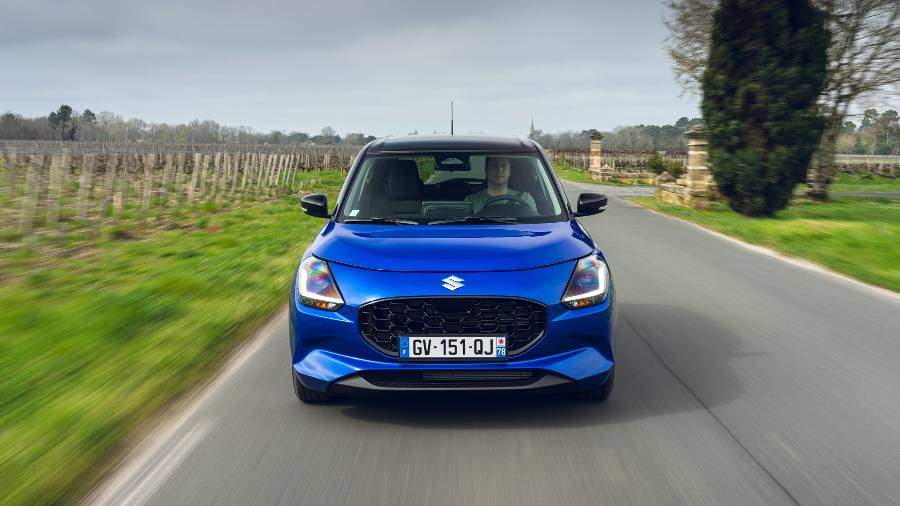
Running Costs & Emissions
There may only be one engine option for Swift customers, but it’s an efficient one. The basic, front-wheel-drive, manual car will return 64.2mpg on the official economy test, and opting for the CVT ‘automatic’ option only cuts that to 60.1mpg. In the real world, we found 60mpg or more would easily be achievable, particularly on a long run.
CO2 emissions are low, too, which is good for company car drivers, with 99g/km emitting from the manual car and 106g/km coming from the automatic. However, choosing the AllGrip all-wheel-drive model will damage fuel economy somewhat thanks to the increased friction of the all-wheel-drive system. Officially, though, it still returns a very respectable 57.6mpg and emits 110g of carbon dioxide every kilometre, so it isn’t that much worse than the standard car.
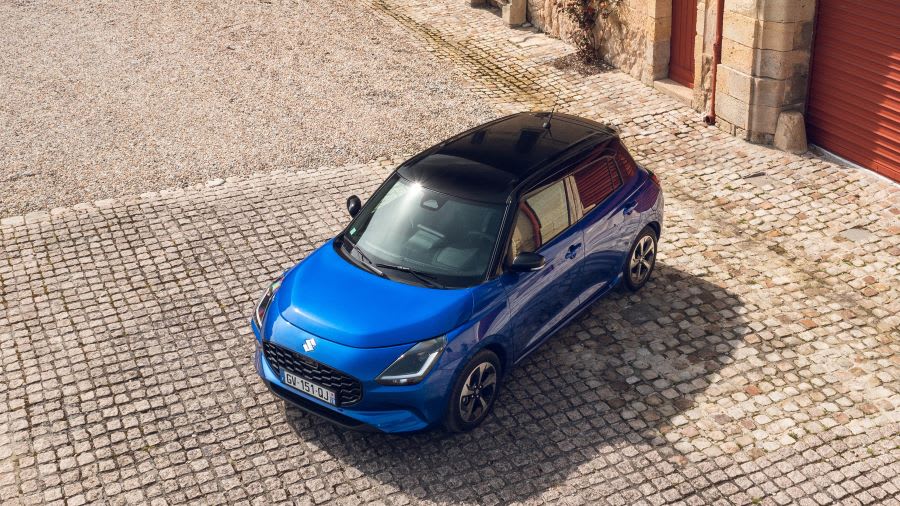
Interior & Technology
Suzuki has put quite a lot of work into the new Swift’s interior, with a view to making the whole thing feel more tactile, more modern and more upmarket. That means there’s a kind of floating spaceship design in the middle, with new 3D-moulded trim on the dash, and it’s all supposed to look a bit less utilitarian than before. It achieves that, but it still doesn’t feel as premium as the cabin in a VW Polo or a Seat Ibiza.
That’s partly because of Suzuki’s search for lightness, which has left the Swift with some slightly low-rent materials in places. That said, it’s all well stitched together, so though it doesn’t feel especially premium, it does feel robust and solidly made, which gives you some assurance that it won’t go falling apart in future, even through the rigours of family life.
Special mention is reserved for the seats, however, which prove themselves very comfortable indeed and help work with the newfound refinement to make the Swift better over longer distances.
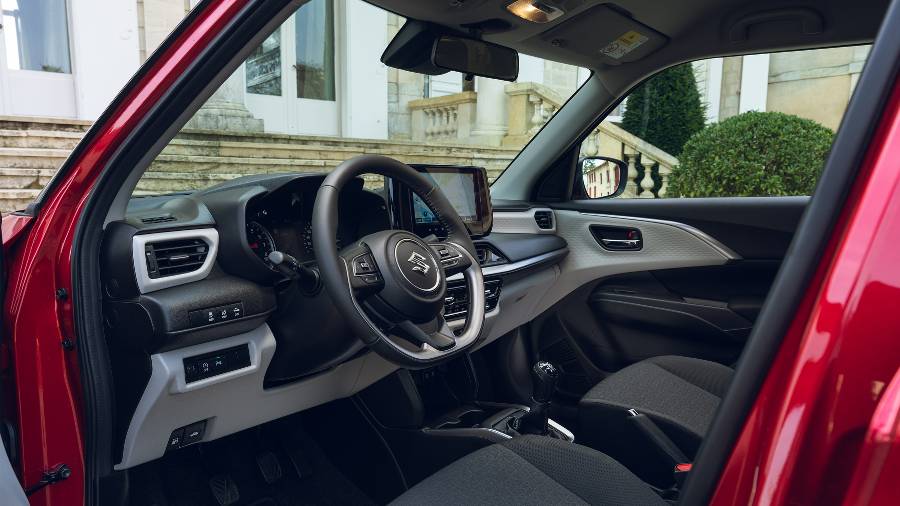
To further boost the appeal of the Swift, Suzuki has also added a new touchscreen infotainment system that’s more or less lifted from the larger S-Cross model. In truth, it’s far from the most modern touchscreen system in the world – the graphics are a bit blocky and it all feels old before its time – but it does everything you want it to do, and it comes with wireless Apple CarPlay and Android Auto connectivity, with which it functions neatly and the graphics look a bit more modern.
And although Suzuki has fitted plenty of driver assistance tech, which is looked upon favourably by the safety bods, there isn’t much else in the way of on-board technology. There’s no option for a digital instrument display, for example, and customers are left with perfectly functional but far-from-fancy analogue gauges. There is a big central trip computer display, however, which provides a bit more information.
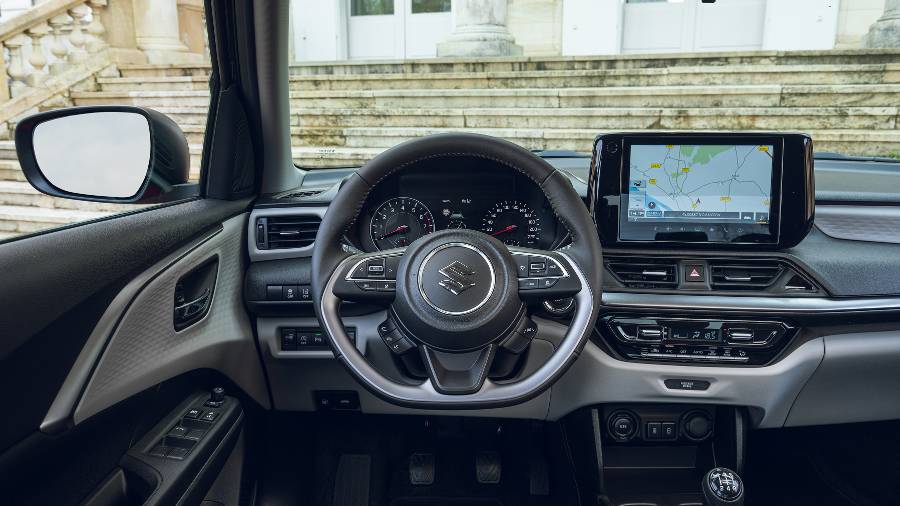
Practicality & Boot Space
In the cabin, the Swift is a pretty roomy car, with enough space between driver and passenger to prevent things from getting too uncomfortable, and ample headroom for those in the front. Space in the back is adequate, too, with enough head and legroom for most passengers – even adults – to sit reasonably comfortably. Sure, very tall adults over six feet or so might find it a bit cramped in there on a long journey, but even they’ll be fine for anything less than an hour or so.
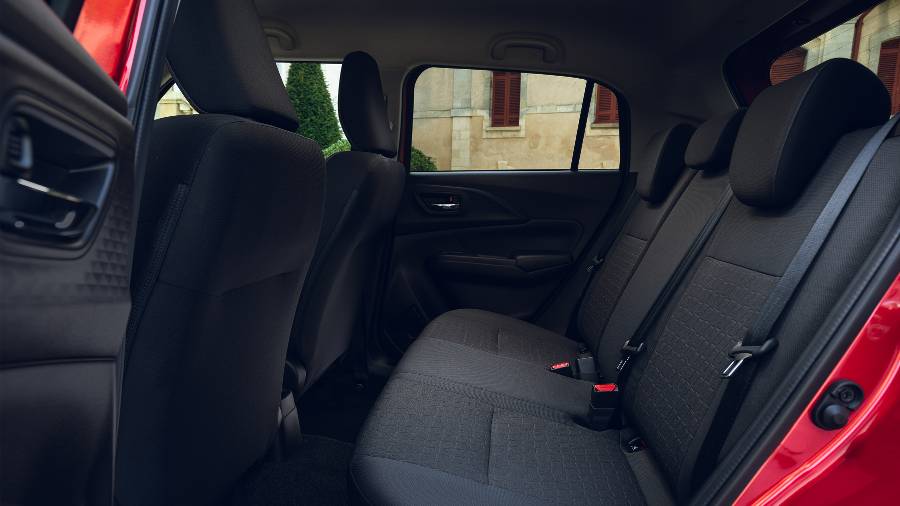
Less impressive, however, is the Swift’s boot. At 265 litres to the parcel shelf when all five seats are upright, it’s considerably smaller than the luggage bay in a VW Polo, say, or even a Toyota Yaris. However, it does at least have sufficient space for a trip to the shops or a school run. It just isn’t as useful as some other small hatchbacks on a long road trip with a family on board.
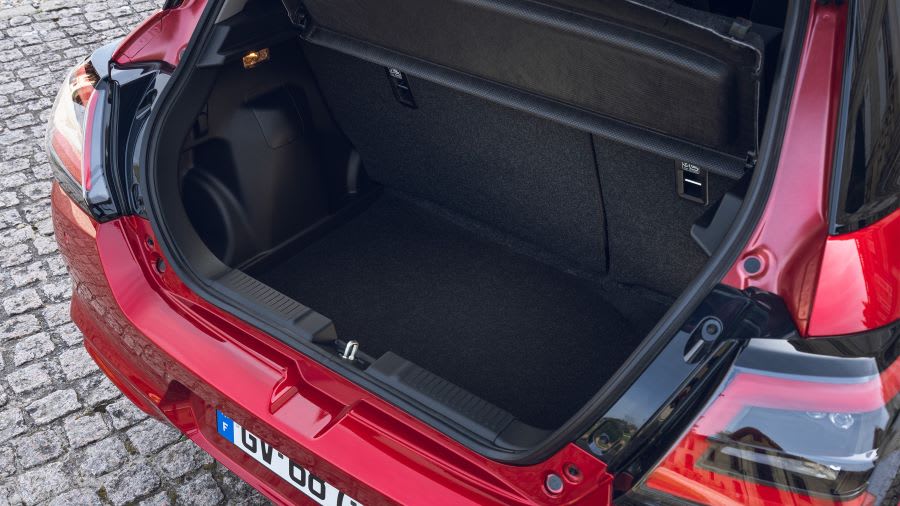
Safety
Euro NCAP, the European independent safety body, has not yet crash-tested the new Swift, but Suzuki has promised a strong showing from its new model. Which is a good thing, because the old car’s ratings were decent without being stellar. In fairness, solid scores for occupant protection were let down by a poor showing in terms of safety assistance tech, leaving the car with four stars when the safety pack was fitted. The newcomer, though, comes with lots of safety tech as standard, and it’s expected to perform more admirably.
Every example will come with autonomous emergency braking to help stop the car if the driver doesn’t respond to a hazard, while lane-departure warning is standard and blind-spot monitoring is also included even with the base model. A reversing camera is standard, too, and there’s lane-keeping assistance tech, as well as a system that bongs at you whenever you break the speed limit.
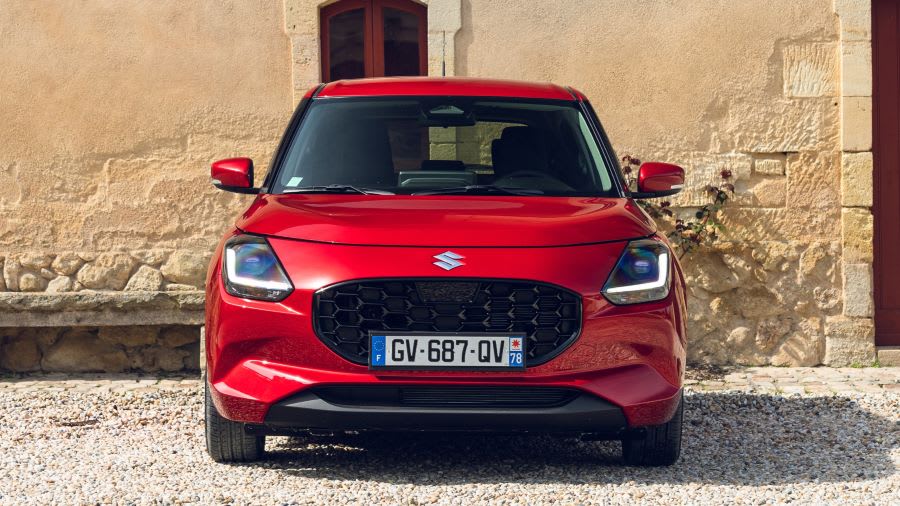
Options
The Swift range is pretty simple, with just two different trim levels to choose from. And in all fairness, the basic Motion model will have more than enough equipment for most customers. Included as standard are 16-inch alloy wheels, automatic headlights and air conditioning, as well as heated front seats, satellite navigation and the Android Auto and Apple CarPlay smartphone integration technology. Even keyless entry and push-button ignition come as standard, as well as cruise control and a reversing camera.
If you want to upgrade to the Ultra, the only real advantage is the inclusion of automatic climate control, which allows you to set the desired temperature and the car to stick to it. But, the Ultra does free up some extra options, including the AllGrip all-wheel-drive system for manual cars.
With such a jam-packed specification, the options list is predictably short, but you do get some interesting aesthetic options. Obviously, there’s the usual array of white, grey, silver and black paint jobs, but Suzuki is offering Flame Orange Metallic and Cool Yellow Metallic (which is more of a pale green) among the single-tone options. For a little more money, customers can choose the deeper Burning Red Pearl and Frontier Blue Pearl colours, or you can go for a two-tone option. Pure White and Cool Yellow can be specified with a Mineral Grey roof, while Burning Red and Frontier Blue can be paired with a Super Black roof.
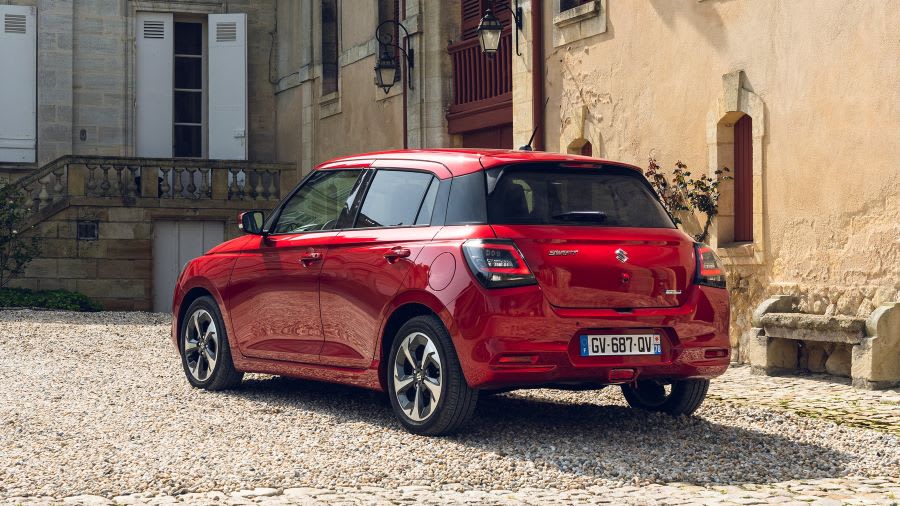
Rival Cars
While Suzuki claims to have spotted an opportunity in the small hatchback market, the new Swift is still flush for direct rivals. Yes, the Ford Fiesta may have gone, and the Nissan Micra and Kia Rio are leaving, too, but that still leaves plenty of competition.
Perhaps the most capable is the Peugeot 208, which was recently revamped to make it more upmarket and more stylish. A design-led car with impressive comfort and some strong 1.2-litre petrol engines, it’s a fun car to drive and it’s cool inside and out. You can even have it in electric form.
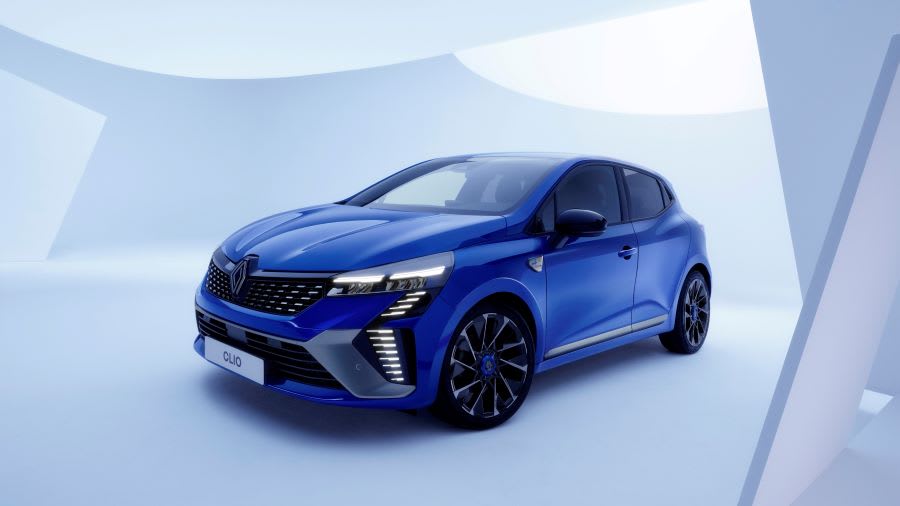
Other competition comes from the practical Renault Clio (above), the spacious and chunky Citroen C3, and the updated Vauxhall Corsa, which sits on the same underpinnings as the 208, but uses them slightly less impressively. You could also look at the Mazda2, which is great to drive and premium inside, or the Hyundai i20, which has recently been refreshed.
Naturally, the Volkswagen Group will be another place to which customers look for compact cars, and the VW Polo is the natural choice. Popular for a reason, it’s a very polished and premium thing, which makes its sister car, the Audi A1, look a bit pointless. The Polo also spawned the Seat Ibiza, which is a bit more youthful in its attitude, and the Skoda Fabia, which is incredibly spacious, offering the same kind of boot space as a VW Golf.
Toyota has also built an incredibly popular small car in the Yaris, which is available solely as a hybrid and combines efficiency with driving enjoyment. It’s also more or less identical to the Mazda2 Hybrid (confusingly, that’s a completely different car from the aforementioned Mazda2), which just adds Mazda’s own dusting of upmarket materials and styling.

Verdict & Next Steps
There’s no doubt the new Swift is a better car than its already worthy predecessor, but with awkward looks and a cramped boot, it still isn’t perfect. If you can live with that, though, the Swift is an amiable and talented small car that’s nice to drive and comes with all the kit you really need as standard. So while it might not be a natural class leader, as a value proposition, it’s a very difficult car to beat.
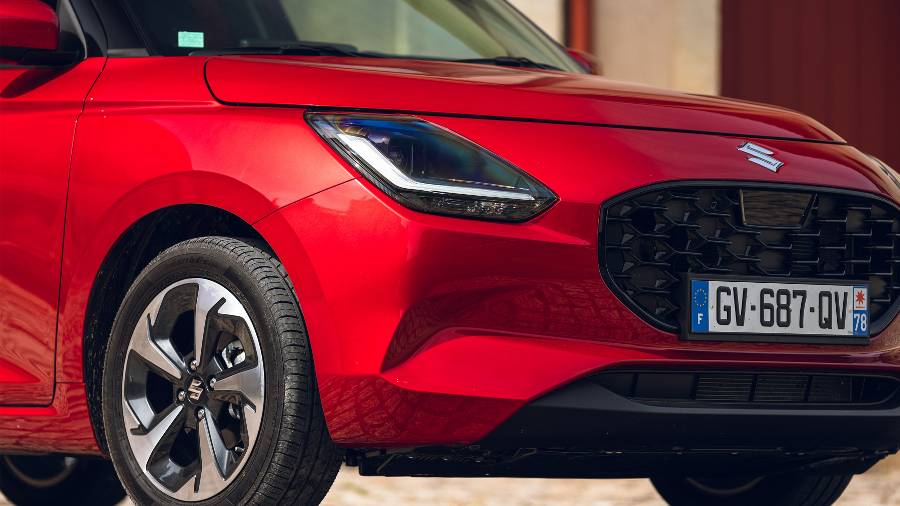
Where to next?
View our Suzuki Swift lease deals - from £198 per month**.
Call us on 0118 3048 688 or hit the green 'Enquire' button for more details.
Looking for a great leasing deal? Check out our incredible range of Special Offers and Lease Deals.
New hatchback? Read our latest Reviews and find the right model for you.
Want to know more about leasing? Take a look at our comprehensive Leasing Guides.
Interested in everything motoring? Why not catch up on all the latest Car Leasing News.
*Score based on Select’s unique meta score analysis, taking into account the UK’s top leading independent car website reviews of the Suzuki Swift.
**Correct as of 16/04/2024. Based on 9 months initial payment, 5,000 miles annually, over a 48 month lease. Initial payment equivalent to 9 monthly payments, or £1,782.18 (Plus admin fee) Ts and Cs apply. Credit is subject to status.
